-
 Bitcoin
Bitcoin $107,341.7259
0.15% -
 Ethereum
Ethereum $2,438.6204
0.70% -
 Tether USDt
Tether USDt $1.0003
-0.02% -
 XRP
XRP $2.1866
1.94% -
 BNB
BNB $649.0952
0.36% -
 Solana
Solana $150.9602
5.63% -
 USDC
USDC $0.9999
0.00% -
 TRON
TRON $0.2742
0.40% -
 Dogecoin
Dogecoin $0.1645
1.93% -
 Cardano
Cardano $0.5669
1.18% -
 Hyperliquid
Hyperliquid $37.8286
4.19% -
 Bitcoin Cash
Bitcoin Cash $491.4669
-2.74% -
 Sui
Sui $2.8150
3.06% -
 Chainlink
Chainlink $13.4184
2.91% -
 UNUS SED LEO
UNUS SED LEO $9.0809
0.27% -
 Avalanche
Avalanche $18.0295
2.60% -
 Stellar
Stellar $0.2396
1.19% -
 Toncoin
Toncoin $2.8587
0.13% -
 Shiba Inu
Shiba Inu $0.0...01160
2.59% -
 Litecoin
Litecoin $86.4192
1.45% -
 Hedera
Hedera $0.1486
1.19% -
 Monero
Monero $308.4324
0.87% -
 Polkadot
Polkadot $3.4202
1.43% -
 Bitget Token
Bitget Token $4.6436
-0.34% -
 Dai
Dai $0.9998
-0.02% -
 Ethena USDe
Ethena USDe $1.0002
0.00% -
 Uniswap
Uniswap $7.1527
3.29% -
 Pi
Pi $0.5357
-8.45% -
 Pepe
Pepe $0.0...09588
4.61% -
 Aave
Aave $259.9759
0.81%
Can we follow up after the 60-minute moving average converges and diverges upward?
When the price converges toward the 60-minute moving average, it signals market indecision, often followed by a potential bullish breakout if divergence occurs with strong volume and candlestick confirmation.
Jun 28, 2025 at 10:56 pm
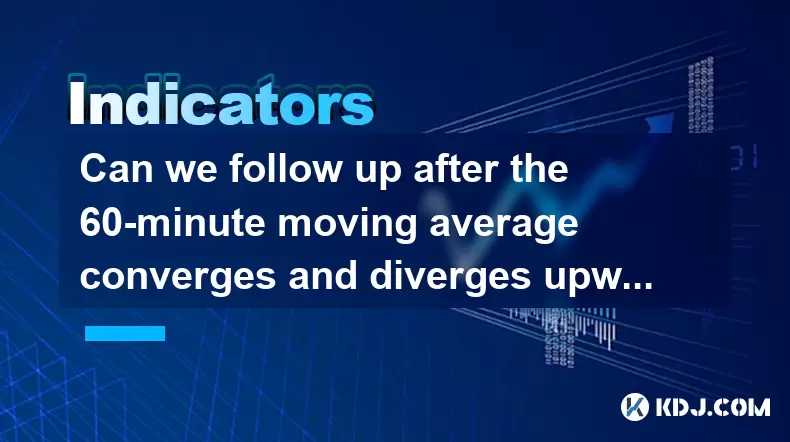
Understanding the 60-Minute Moving Average in Cryptocurrency Trading
In cryptocurrency trading, moving averages are among the most commonly used technical indicators. The 60-minute moving average is particularly favored by short-term traders who focus on intraday price movements. This indicator calculates the average price of an asset over the last 60 minutes and updates with each new candlestick or time interval. Traders use this to identify trends, support/resistance levels, and potential reversal points.
When analyzing the 60-minute moving average, it's crucial to understand how convergence and divergence occur. Convergence refers to the price approaching the moving average line, often indicating a consolidation phase. Divergence occurs when the price moves away from the moving average, suggesting a strengthening trend. A convergence followed by upward divergence may signal a bullish momentum shift.
What Does It Mean When the Price Converges Toward the 60-Minute Moving Average?
Price convergence toward the 60-minute moving average typically suggests that the market is entering a period of indecision or balance between buyers and sellers. In such cases, the price fluctuates around the moving average line, showing no clear direction. This can be seen as a consolidation phase where traders assess whether the current trend will continue or reverse.
During this phase, traders closely monitor volume and candlestick patterns to anticipate a breakout. A break above the moving average accompanied by increased volume could indicate renewed buying pressure. Conversely, a drop below the moving average with strong selling volume might suggest bearish control. Understanding these dynamics helps traders decide whether to enter or exit positions during this critical juncture.
How to Identify Upward Divergence After Convergence
After observing convergence, the next key step is identifying upward divergence. This happens when the price begins to rise decisively away from the moving average line. To confirm this divergence, traders should look for several technical signs:
- A series of higher highs and higher lows forming above the 60-minute moving average
- Increased volume accompanying the price movement
- Bullish candlestick patterns like hammer, engulfing, or morning star formations
Using additional tools like the Relative Strength Index (RSI) or MACD can help validate the strength of the emerging trend. If RSI rises above 50 or MACD crosses above its signal line, it reinforces the likelihood of a sustainable uptrend.
Practical Steps to Trade the Convergence and Divergence Signal
To effectively trade based on the 60-minute moving average convergence and subsequent upward divergence, follow these steps:
- Add the 60-minute moving average to your charting platform. Most platforms like TradingView allow you to customize the time frame and type of moving average (SMA, EMA, etc.)
- Wait for the price to approach the moving average line, ideally after a downtrend or sideways movement
- Monitor volume and candlestick behavior during the convergence phase
- Look for a breakout candle that closes clearly above the moving average
- Enter a long position once the breakout is confirmed, preferably with increased volume
- Set a stop-loss slightly below the recent swing low or the moving average itself
- Target profits at previous resistance levels or use a trailing stop to capture extended moves
Each of these steps should be executed with precision. For example, ensure that the breakout candle has minimal wicks and strong close relative to its high. Avoid entering trades based solely on price touching the 60-minute moving average without confirmation signals.
Common Pitfalls to Avoid When Following This Strategy
While following the 60-minute moving average convergence and upward divergence can be effective, several pitfalls must be avoided:
- False breakouts: Many times, the price may appear to break out but quickly reverses. Always wait for confirmation through multiple candles or volume spikes
- Ignoring broader market conditions: Even if a chart shows a bullish setup, a negative macro event or strong bearish sentiment in the crypto market can invalidate the signal
- Overtrading: Not every convergence leads to a meaningful divergence. Be selective and patient in choosing high-probability setups
- Neglecting risk management: Proper position sizing and stop-loss placement are essential to protect capital, especially in volatile crypto markets
By being aware of these risks and applying disciplined trading practices, traders can enhance their success rate when using the 60-minute moving average strategy.
Frequently Asked Questions
Q: What type of moving average should I use for the 60-minute chart?
A: While simple moving averages (SMA) are widely used, many traders prefer exponential moving averages (EMA) because they give more weight to recent prices. The choice depends on personal preference and backtesting results.
Q: Can this strategy be applied to all cryptocurrencies?
A: Yes, the 60-minute moving average convergence and divergence strategy can be applied across various cryptocurrencies. However, assets with higher liquidity and volume tend to produce more reliable signals due to reduced market manipulation and slippage.
Q: How do I differentiate between a genuine upward divergence and a fakeout?
A: Confirm with volume analysis and candlestick patterns. A real divergence usually comes with strong volume and decisive candlestick closes. Fakeouts often show weak volume and rejection wicks.
Q: Should I combine this strategy with other indicators?
A: Absolutely. Using complementary indicators like RSI, MACD, or volume profiles enhances the reliability of the 60-minute moving average signal. Combining tools reduces false signals and improves decision-making accuracy.
Disclaimer:info@kdj.com
The information provided is not trading advice. kdj.com does not assume any responsibility for any investments made based on the information provided in this article. Cryptocurrencies are highly volatile and it is highly recommended that you invest with caution after thorough research!
If you believe that the content used on this website infringes your copyright, please contact us immediately (info@kdj.com) and we will delete it promptly.
- Ruvi AI: The Audited Token Primed to Lead the Bull Run, Outshining Competitors
- 2025-06-29 06:30:13
- Ruvi AI: The Smart Shiba Inu? Token Rally Potential Examined
- 2025-06-29 06:30:13
- Bitcoin, AI Tokens, and Ruvi AI: What's the Deal?
- 2025-06-29 06:50:12
- Cryptos with Real-World Utility and Growth Potential: Qubetics and Beyond
- 2025-06-29 06:35:13
- Ruvi AI, Dogecoin, and ROI: Decoding the Crypto Hype
- 2025-06-29 07:12:05
- Unstaked vs. Dogecoin & Ethereum: The Next Big Crypto Opportunity?
- 2025-06-29 07:15:12
Related knowledge
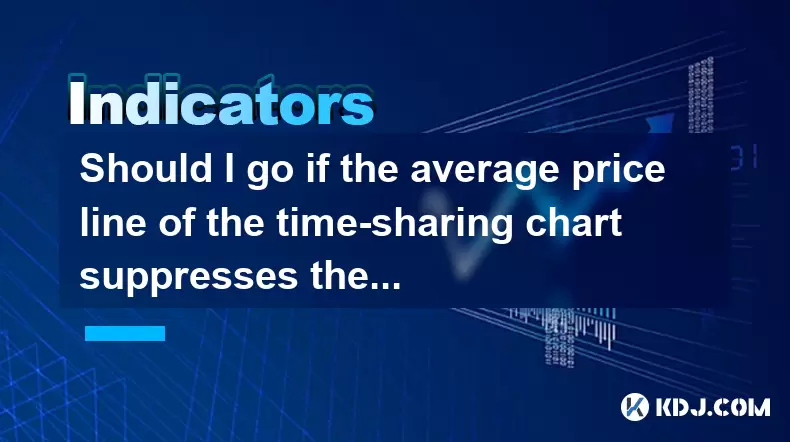
Should I go if the average price line of the time-sharing chart suppresses the rebound?
Jun 28,2025 at 05:14pm
Understanding the Time-Sharing Chart and Average Price LineThe time-sharing chart is a real-time chart used in cryptocurrency trading to visualize price movements over short intervals, typically within a single trading day. It provides traders with insights into intraday volatility and momentum. The average price line, often calculated as a moving avera...
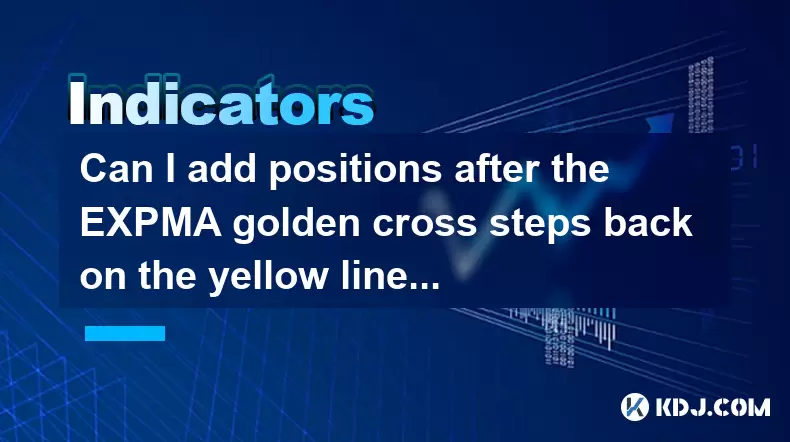
Can I add positions after the EXPMA golden cross steps back on the yellow line?
Jun 28,2025 at 11:57am
Understanding the EXPMA Indicator and Its RelevanceThe EXPMA (Exponential Moving Average) is a technical analysis tool used by traders to identify trends and potential entry or exit points in financial markets, including cryptocurrency trading. Unlike simple moving averages, EXPMA gives more weight to recent price data, making it more responsive to new ...

How to operate the next day after the daily limit is released with huge volume?
Jun 28,2025 at 12:35pm
Understanding the Daily Limit and Its ReleaseIn cryptocurrency trading, daily limits are often set by exchanges to manage volatility or during periods of high market activity. These limits can restrict how much an asset's price can fluctuate within a 24-hour period. When the daily limit is released, it typically means that the price cap has been lifted,...
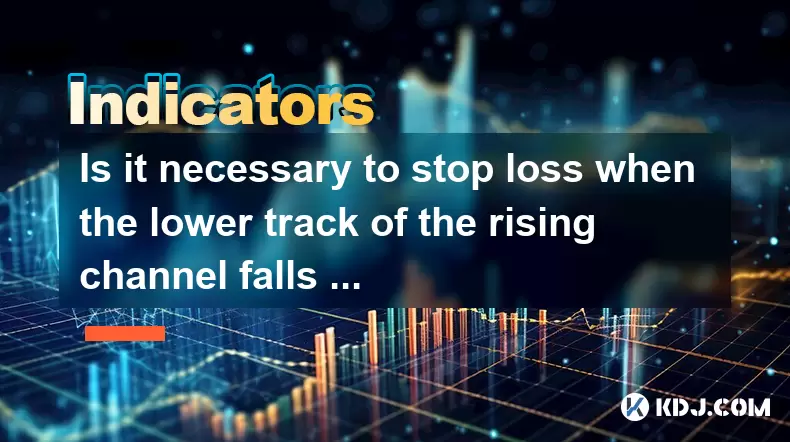
Is it necessary to stop loss when the lower track of the rising channel falls below?
Jun 28,2025 at 05:29pm
Understanding the Rising Channel PatternThe rising channel pattern is a popular technical analysis tool used by traders to identify potential upward trends in asset prices. It consists of two parallel lines: an upper resistance line and a lower support line, both sloping upwards. The price action typically oscillates between these boundaries, offering o...
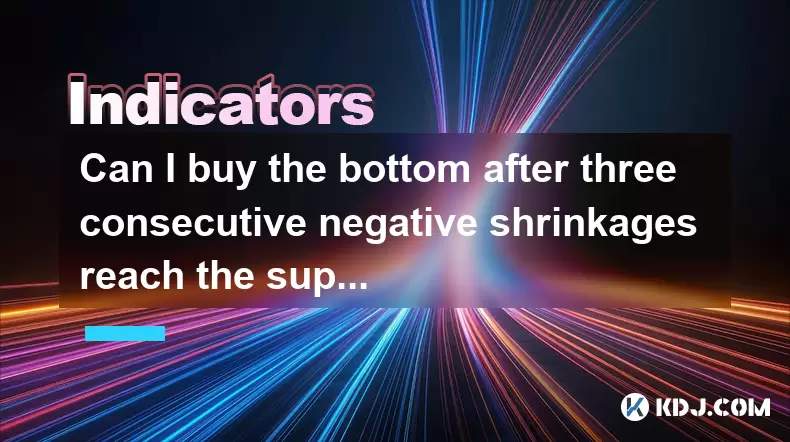
Can I buy the bottom after three consecutive negative shrinkages reach the support level?
Jun 29,2025 at 03:43am
Understanding the Context of Three Consecutive Negative ShrinkagesIn the cryptocurrency market, price patterns are often analyzed to predict potential reversals or continuations. A negative shrinkage refers to a situation where the candlestick body becomes smaller in a downtrend, indicating weakening selling pressure. When this happens three times conse...
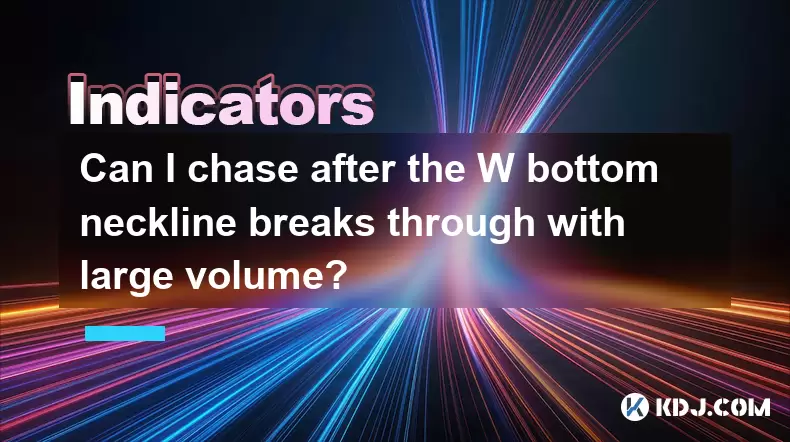
Can I chase after the W bottom neckline breaks through with large volume?
Jun 28,2025 at 07:28am
Understanding the W Bottom Pattern in Cryptocurrency TradingThe W bottom pattern is a common technical analysis formation used by traders to identify potential bullish reversals. In cryptocurrency markets, this pattern typically appears after a downtrend and signals that the selling pressure may be diminishing. The structure of the W bottom includes two...

Should I go if the average price line of the time-sharing chart suppresses the rebound?
Jun 28,2025 at 05:14pm
Understanding the Time-Sharing Chart and Average Price LineThe time-sharing chart is a real-time chart used in cryptocurrency trading to visualize price movements over short intervals, typically within a single trading day. It provides traders with insights into intraday volatility and momentum. The average price line, often calculated as a moving avera...

Can I add positions after the EXPMA golden cross steps back on the yellow line?
Jun 28,2025 at 11:57am
Understanding the EXPMA Indicator and Its RelevanceThe EXPMA (Exponential Moving Average) is a technical analysis tool used by traders to identify trends and potential entry or exit points in financial markets, including cryptocurrency trading. Unlike simple moving averages, EXPMA gives more weight to recent price data, making it more responsive to new ...

How to operate the next day after the daily limit is released with huge volume?
Jun 28,2025 at 12:35pm
Understanding the Daily Limit and Its ReleaseIn cryptocurrency trading, daily limits are often set by exchanges to manage volatility or during periods of high market activity. These limits can restrict how much an asset's price can fluctuate within a 24-hour period. When the daily limit is released, it typically means that the price cap has been lifted,...

Is it necessary to stop loss when the lower track of the rising channel falls below?
Jun 28,2025 at 05:29pm
Understanding the Rising Channel PatternThe rising channel pattern is a popular technical analysis tool used by traders to identify potential upward trends in asset prices. It consists of two parallel lines: an upper resistance line and a lower support line, both sloping upwards. The price action typically oscillates between these boundaries, offering o...

Can I buy the bottom after three consecutive negative shrinkages reach the support level?
Jun 29,2025 at 03:43am
Understanding the Context of Three Consecutive Negative ShrinkagesIn the cryptocurrency market, price patterns are often analyzed to predict potential reversals or continuations. A negative shrinkage refers to a situation where the candlestick body becomes smaller in a downtrend, indicating weakening selling pressure. When this happens three times conse...

Can I chase after the W bottom neckline breaks through with large volume?
Jun 28,2025 at 07:28am
Understanding the W Bottom Pattern in Cryptocurrency TradingThe W bottom pattern is a common technical analysis formation used by traders to identify potential bullish reversals. In cryptocurrency markets, this pattern typically appears after a downtrend and signals that the selling pressure may be diminishing. The structure of the W bottom includes two...
See all articles

























































































